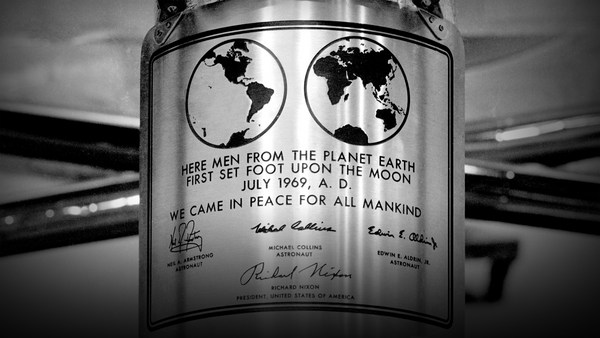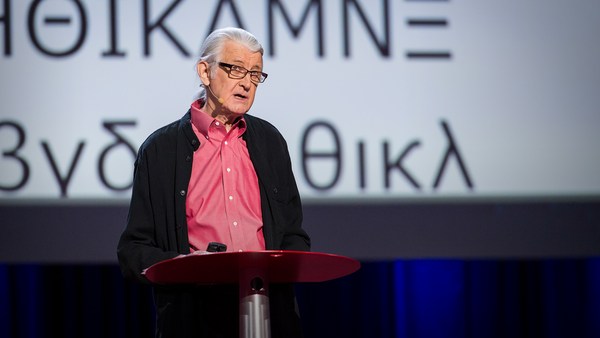This is Roger Penrose. Certainly one of the great scientists of our time, winner of the 2020 Nobel Prize in Physics for his work reconciling black holes with Einstein's general theory of relativity. But back in the 1970s, Roger Penrose made a contribution to the world of mathematics and that part of mathematics known as tiling. You know, tiling, the process of putting tiles together so that they form a particular pattern.
The thing that was remarkable about the pattern that Roger Penrose developed is that by using only two shapes, he constructed a pattern that could be expanded infinitely in any direction without ever repeating. Much like the number pi has a decimal that isn’t random, but it will go on forever without repeating. In mathematics, this is a property known as aperiodicity and the notion of an aperiodic tile set using only two tiles was such a sensation, it was given the name Penrose tiling. Here's Roger Penrose, now Sir Roger Penrose, standing on a field of Penrose tiles.
Then in 2007, this man, Peter Lu, who was then a graduate student in physics at Princeton, while on vacation with his cousin in Uzbekistan, discovered this pattern on a 14th century madrassa. And after some analysis, concluded that this was, in fact, Penrose tiling 500 years before Penrose.
(Laughter)
That information took the scientific world by storm and prompted headlines everywhere, including “Discover” magazine, which proclaimed this the 59th most important scientific discovery of the year 2007.
So now we've heard about this amazing pattern from the point of view of mathematics and from physics and now art and archeology. So that leads us to the question what was there about this pattern that this ancient culture found so important that they put it on their most important building? So for that, we look to the world of anthropology and ask the question, What was the worldview of the culture that made this? And this is what we learn.
This pattern is life. And as you can see, life's complicated. It's complicated. But not only is life complicated, life is also aperiodic in the sense that every event, every happening, every decision will make the future unfold differently, often in ways that are impossible to predict. Yet, in spite of the complexity and in spite of a future that's impossible to predict, there remains an underlying unity that holds everything together and gives rise to everything. Let's see how that works in a design much like the one Peter Lu found in Uzbekistan.
This is that design. Now, it turns out this is actually based on this set of Penrose tiles, which are reducible to these shapes. And in order to draw these shapes, the medieval craftsmen who did this would have done them by using these construction lines. And I add here that the construction lines don't appear in the final work. But if we add them back, we have this. And now if we weave them together, we will have this. And now if we hide the tiles and just look at the construction lines, we see this. Clearly there's an underlying structure and unity to things that seem to be complex and aperiodic.
This notion of a hidden underlying unity was common throughout the ancient world, and one sees it in Egypt, in Greece, in Australia, in Mesoamerica, in North America, in Europe and in the Middle East. Now in the modern West, we might call this underlying unity “God,” but throughout the ages, other terms have been used to describe the same thing. This is what Plato called “first cause.” In the medieval period, philosopher Spinoza called this the “singular substance.” In the 20th century, a number of terms were coined to describe this, one of my favorites being from philosopher Alfred North Whitehead, who called this the “undifferentiated aesthetic continuum.” Doesn't that have a 20th century sound to it? But for me, a lover of science that I am, I will take the term coined by the great 20th century physicist David Bohm, who called this the “implicate order.”
So what's the takeaway here? Very simply, this. When we see these wonderful designs created by cultures that are separated from our own by thousands of miles or thousands of years, we can know these aren't decorations. These are statements about the fundamental values that culture had, what they found important, how they saw themselves, the world and themselves in the world. It has been said that architecture is a book written in stone. So when we see these amazing designs, we can know they're not decorations. They're a statement. They're a message. Look, listen. You can hear their voices.
Thank you.
(Applause)





